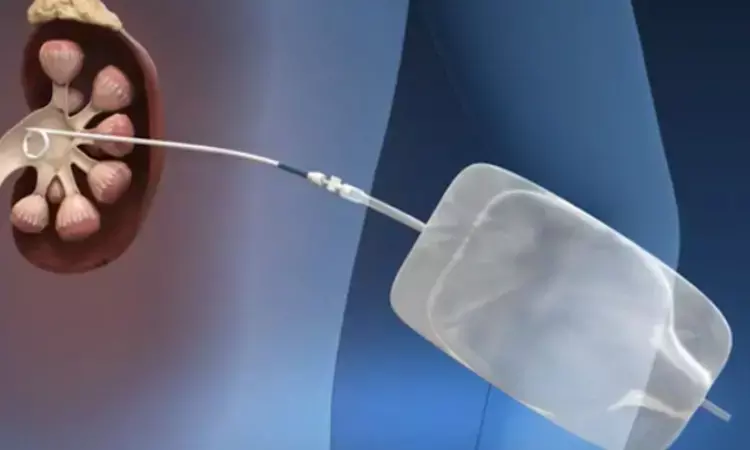- Home
- Medical news & Guidelines
- Anesthesiology
- Cardiology and CTVS
- Critical Care
- Dentistry
- Dermatology
- Diabetes and Endocrinology
- ENT
- Gastroenterology
- Medicine
- Nephrology
- Neurology
- Obstretics-Gynaecology
- Oncology
- Ophthalmology
- Orthopaedics
- Pediatrics-Neonatology
- Psychiatry
- Pulmonology
- Radiology
- Surgery
- Urology
- Laboratory Medicine
- Diet
- Nursing
- Paramedical
- Physiotherapy
- Health news
- Fact Check
- Bone Health Fact Check
- Brain Health Fact Check
- Cancer Related Fact Check
- Child Care Fact Check
- Dental and oral health fact check
- Diabetes and metabolic health fact check
- Diet and Nutrition Fact Check
- Eye and ENT Care Fact Check
- Fitness fact check
- Gut health fact check
- Heart health fact check
- Kidney health fact check
- Medical education fact check
- Men's health fact check
- Respiratory fact check
- Skin and hair care fact check
- Vaccine and Immunization fact check
- Women's health fact check
- AYUSH
- State News
- Andaman and Nicobar Islands
- Andhra Pradesh
- Arunachal Pradesh
- Assam
- Bihar
- Chandigarh
- Chattisgarh
- Dadra and Nagar Haveli
- Daman and Diu
- Delhi
- Goa
- Gujarat
- Haryana
- Himachal Pradesh
- Jammu & Kashmir
- Jharkhand
- Karnataka
- Kerala
- Ladakh
- Lakshadweep
- Madhya Pradesh
- Maharashtra
- Manipur
- Meghalaya
- Mizoram
- Nagaland
- Odisha
- Puducherry
- Punjab
- Rajasthan
- Sikkim
- Tamil Nadu
- Telangana
- Tripura
- Uttar Pradesh
- Uttrakhand
- West Bengal
- Medical Education
- Industry
FURL or all-seeing needle-assisted PCNL, which is better for treating calyceal diverticulum stones?

China: Calyceal diverticula (CD) stones can be treated minimally invasive and effectively by percutaneous nephrolithotomy (PCNL) and flexible ureteroscopy lithotripsy (FURL), a recent study in the journal Urolithiasis has stated.
For the treatment of calyceal diverticula stones, PCNL was shown to be more efficient than FURL, and its safety was improved with the help of all-seeing needle assistance. The effects of FURL were dependent greatly on the anatomy and location of the diverticula.
The study was conducted by Xiang Li, First Affiliated Hospital of Xi'an Jiaotong University, Shaanxi Province, Xi'an, China, and colleagues with the objective to investigate the effectiveness and safety of flexible ureteroscopy lithotripsy and all-seeing needle-assisted percutaneous nephrolithotomy for the treatment of calyceal diverticula stones.
For this purpose, the researchers retrospective reviewed 24 patients, including 14 females and 10 males, with an average age of 45.6 ± 17.4 years from June 2012 to November 2020, 24 patients. Out of these, 14 were treated with FURL, and 10 underwent all-seeing needle-assisted PCNL. They recorded demographic data, perioperative parameters, and complications, as well as follow-up data.
The key findings of the study were as follows:
- In the FURL group, the ostium of CD was not identified in two patients, and these patients were finally treated with all-seeing needle-assisted PCNL.
- The stone clearance rate (SCR) was 64.3%, and the mean blood loss was 0.9 ± 0.8 g/dL.
- The average operation time was 57.5 ± 17.4 min, and the mean hospital stay was 3.5 ± 1.4 days.
- A complete resolution of CD was observed in 41.7% of patients over the average follow-up of 10.8 months.
- In terms of the all-seeing needle-assisted PCNL, the average operation time was 83.5 ± 32.4 min, and the mean hospital stay was 4.38 ± 2.25 days.
- The SCR reached 91.7%, and the blood loss was 1.7 ± 1.1 g/dL.
- Nine patients (75%) were observed to have complete CD resolution over an average of 12.2 months of follow-up.
- All complications were grade I and II in both groups.
To conclude, "CD stones can be treated minimally invasive and effectively by FURL and PCNL."
Reference:
Zeng, J., Zhang, L., Chen, X. et al. The treatment option for calyceal diverticulum stones: flexible ureteroscopy lithotripsy (FURL) or all-seeing needle-assisted percutaneous nephrolithotomy (PCNL)?. Urolithiasis (2022). https://doi.org/10.1007/s00240-022-01353-y
Dr Kamal Kant Kohli-MBBS, DTCD- a chest specialist with more than 30 years of practice and a flair for writing clinical articles, Dr Kamal Kant Kohli joined Medical Dialogues as a Chief Editor of Medical News. Besides writing articles, as an editor, he proofreads and verifies all the medical content published on Medical Dialogues including those coming from journals, studies,medical conferences,guidelines etc. Email: drkohli@medicaldialogues.in. Contact no. 011-43720751


